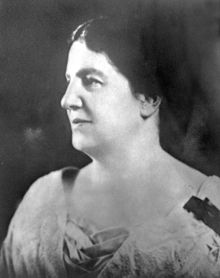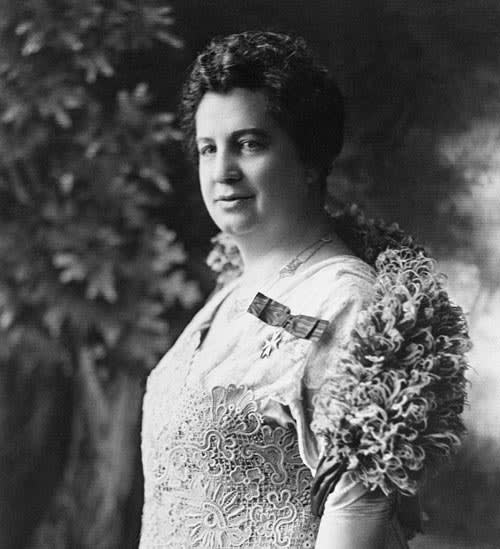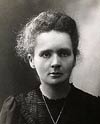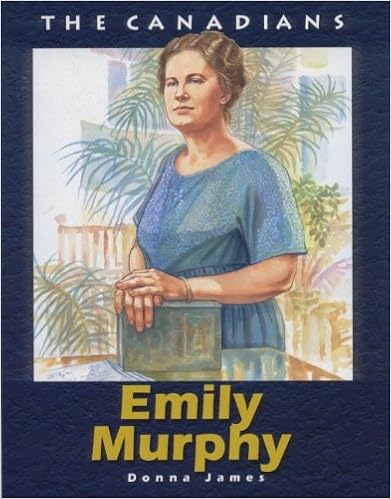Emily Murphy (1868-1933) was a Canadian equal rights activist. She became Canada’s first female magistrate and helped to repeal discriminatory legislation against women. In 1929, she succeeded in gaining a ruling that stated women were legal persons under the B.N.A act and so could serve as a member of Congress and judges.
“The world loves a peaceful man, but it gives way to a strenuous kicker.”
– Emily Murphy
Emily Murphy Short Biography

In 1887, she married Arthur Murphy, an Anglican priest; together they had four children. After the death of one of her children from diphtheria, the family moved to Manitoba and then Edmonton, Alberta in 1906.

As part of her efforts to look out for the welfare of women, in 1916, Murphy along with other activists tried to be at the trial of some women accused of prostitution. However, Murphy and the other female observers were asked to leave the court during the trial – they were told ‘it would be inappropriate for them to be present’. Murphy felt it was wrong that female prostitutes were being tried only in the presence of men. She protested to the provincial Attorney general and argued that if women couldn’t be tried with both men and women present, they should be tried by a female judge.
Because of her protest, Murphy was allowed to become a female magistrate – the first female police magistrate in the British Empire. However, during her first case on 1 July 1916, the defendant’s lawyer protested that Murphy’s guilty verdict was invalid because Murphy was a woman and therefore, under the BNA act of 1867, was not a legal person.
Because of this legal challenge, Murphy began a long campaign to have women classified as persons, and the archaic 1867 law overturned. She allowed her name to be put forward as a candidate for the Senate. However, it was turned down by Prime Minister Robert Borden because the BNA act did not recognise women as a person. Motivated by this anachronism, she found that one way to challenge a law was to present a submission from five interested parties to the Canadian Supreme Court. These became known as the Famous Five and included Nellie McClung, Louis McKinney, Henrietta Edwards and Irene Parlby. This became known as the person’s case, and the Supreme Court ruled on the question:
“Does the word ‘person’ in Section 24 of the British North America Act include female persons?”
In March 1928, the Canadian Supreme Court ruled that women did not constitute a person. However, undeterred, Murphy appealed to the Judicial Committee of the Privy Council in Britain (at the time, the highest court of appeal) The Privy Council ruled, on 18 October 1929, that women were considered a person under the BNA and were eligible to serve in the Senate. This was a landmark ruling and paved the way for women to enter government and helped to change societies attitudes to women in many other professions.
During the 1920s, in her work as a social activist, she came into contact with many social problems. One issue was drug use, that was often highest amongst the Chinese immigrant population.
She wrote a book “The Black Candle” which highlighted the problems of drug addiction and argued for much stricter legislation to counter the problem of drug addiction, especially opium and cocaine.
“(drug use) is a scourge so dreadful in its effects that it threatens the very foundations of civilization,”
The highlighting of the drug issue was also closely related to the immigration issue. At the time, there was concern over levels of immigration, and drug use by immigrants was seen as a good reason to restrict immigration, and also forcibly deport immigrants. She criticised those who would label the Chinese as ‘scapegoats’ for the drug problem. But, also held views that expressed concern that other races might take over white society.
Like many of her time, she was supportive of the Eugenics movement. The idea that there needed to be strict birth control to limit population growth and prevent mentally defective people from giving birth. At this time, many people who were considered to have abnormally low intelligence were forcibly sterilised.
Emily Murphy died in 1933, without ever becoming a member of the Canadian Senate, but she had helped future generations of women to achieve that. Emily Murphy is remembered for her contribution in raising the profile of women’s issues and overturning laws which discriminated against their becoming a full member of society. Although her attitudes often reflected the prevailing opinions of the day, she also was a visionary who saw many cases of injustice and fought to give women a fairer deal within society.
Citation: Pettinger, Tejvan. “Biography of Emily Murphy”, Oxford, www.biographyonline.net Published 1 February 2010. Last updated: 12 February 2018.
Emily Murphy
- Emily Murphy (The Canadians) at Amazon
Related



